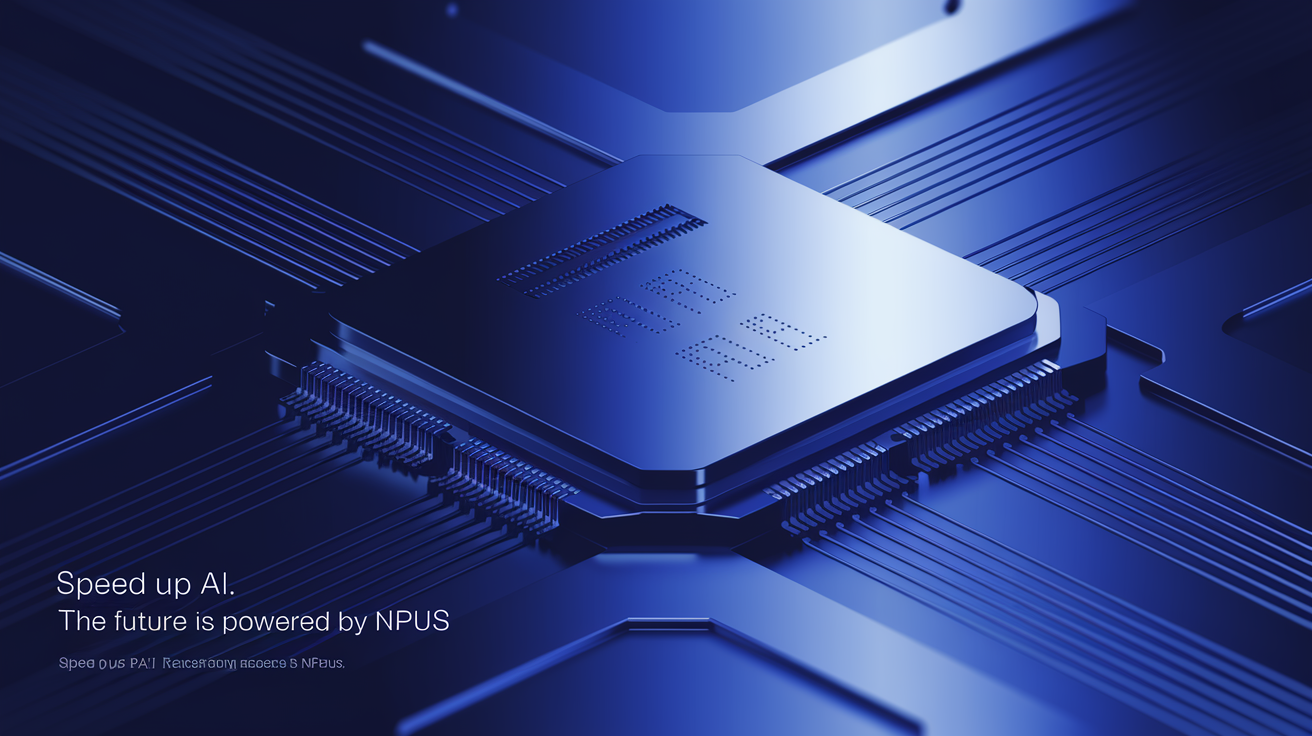What is an NPU?
By Pawan | 2/4/2025 5:42:12 PM

In the evolving world of technology, especially artificial intelligence (AI) and machine learning (ML), the demand for specialized hardware has grown significantly. One such specialized hardware unit gaining traction is the Neural Processing Unit (NPU). In this blog, we’ll take an in-depth look at NPUs—what they are, how they differ from traditional processing units like CPUs and GPUs, and their essential role in accelerating AI and machine learning tasks. A Neural Processing Unit (NPU) is a type of processor designed specifically to accelerate AI and machine learning tasks, particularly those related to neural networks. It is optimized to perform the massive parallel computations required for deep learning and AI models, making it a vital component for modern AI applications, from natural language processing (NLP) to computer vision and robotics. Unlike traditional processors such as CPUs and GPUs, NPUs are purpose-built for the unique requirements of AI workloads, allowing them to process vast amounts of data more efficiently and quickly. To understand NPUs better, it’s essential to distinguish them from other types of processors—CPUs (Central Processing Units) and GPUs (Graphics Processing Units). The CPU is the "brain" of most computing systems, responsible for executing a wide variety of general-purpose tasks. CPUs are optimized for single-threaded performance, meaning they excel at handling sequential tasks and complex logic operations. While CPUs can perform AI and machine learning computations, they are not the most efficient for this purpose due to their limited parallel processing capabilities. Initially designed to render graphics for gaming and visual computing, GPUs have evolved to handle parallel tasks far better than CPUs. This makes them highly suitable for AI tasks like training deep neural networks. GPUs are optimized for tasks involving large datasets that can be processed simultaneously, making them faster than CPUs in many machine learning applications. However, GPUs were not specifically built with the intent to handle neural network operations, which is where NPUs come in. NPUs take parallel processing to the next level by specializing in AI-specific tasks, particularly neural network operations like matrix multiplications, convolutions, and other tasks that require intensive data processing. These processors can handle AI workloads more efficiently by utilizing an architecture designed from the ground up to accelerate machine learning algorithms. AI and machine learning models, particularly deep learning models, require large-scale data processing, which involves a lot of repetitive mathematical operations. For example, a convolutional neural network (CNN) used for image recognition involves billions of matrix multiplications that need to be computed simultaneously. Traditional CPUs and GPUs can handle these computations but are not as efficient as NPUs, which are designed specifically to speed up these operations. Here’s how NPUs improve AI task execution: As AI and machine learning continue to make their way into everyday life, the need for specialized processing units like NPUs will only grow. NPUs provide unmatched performance, efficiency, and speed for AI workloads, distinguishing themselves from CPUs and GPUs with their deep learning optimization. Whether in smartphones, self-driving cars, or healthcare, NPUs are helping to drive the next wave of AI innovation, pushing the boundaries of what’s possible in machine learning and neural networks. For developers, engineers, and companies looking to accelerate their AI initiatives, integrating NPUs into their systems might be the key to unlocking faster, more efficient, and scalable AI solutions.An NPU? A Deep Dive into Neural Processing Units
What is an NPU?
NPUs vs. CPUs and GPUs
CPUs (Central Processing Units)
GPUs (Graphics Processing Units)
NPUs (Neural Processing Units)
How NPUs Accelerate AI and Machine Learning Tasks
Real-World Applications of NPUs
Conclusion

